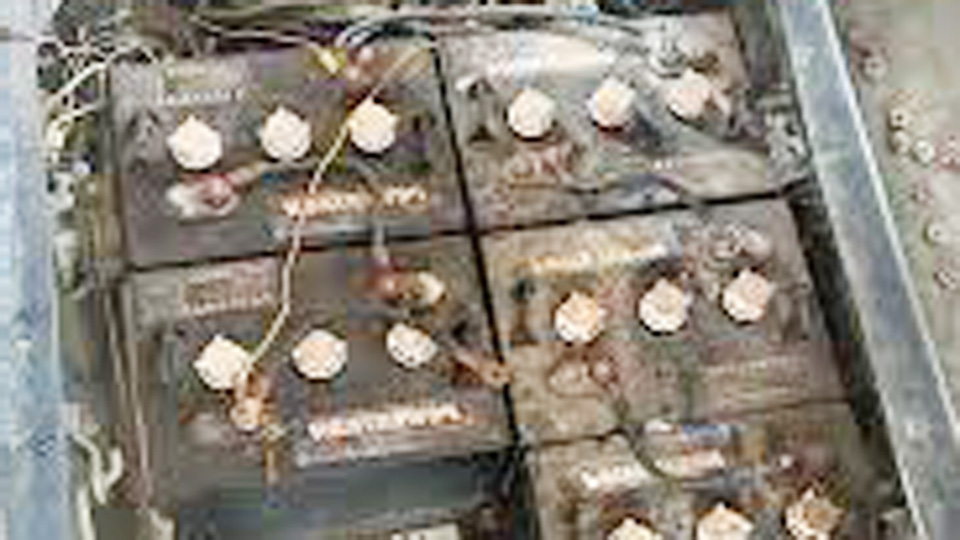How to Fix a Golf Cart That Won’t Connect to Battery?
If you’ve ever hopped into your golf cart, turned the key, and got nothing but silence, you know how frustrating it can be. I’ve been there, tinkering with my own cart in the garage, trying to figure out why it won’t connect to the battery. As someone who’s spent years messing around with golf carts—both electric and gas-powered—I’ve learned a thing or two about this issue.
A golf cart that won’t connect to its battery is a common problem, but it’s usually fixable with a little know-how. If you use your cart for zipping around the course or cruising the neighborhood, I’m here to guide you through why this happens and how to get your cart running again.

Photo by reddit
Why Your Golf Cart Won’t Connect to the Battery
When your golf cart doesn’t respond, it’s often because the battery isn’t delivering power to the system. Think of the battery as the heart of your cart—without a proper connection, nothing else works. I’ve seen this issue pop up in all kinds of carts, from Club Car to EZGO, and it’s usually due to a few common culprits.
Maybe the battery terminals are corroded, the cables are loose, or something deeper in the electrical system is off. The good news? Most of these problems are straightforward to diagnose and fix. Let’s explore what might be going wrong and how to tackle it.
Common Causes of Battery Connection Issues
Over the years, I’ve narrowed down the most frequent reasons a golf cart won’t connect to its battery. Here’s what I’ve found.
Corroded Battery Terminals
One of the first things I check is the battery terminals. Corrosion—those crusty, white or greenish deposits—can build up on the terminals and block the flow of electricity. It’s like trying to drink through a clogged straw.
I once had a cart that wouldn’t budge, and after a quick look, I saw the terminals were covered in gunk. A little cleaning fixed it right up. Corrosion happens because of battery acid vapors or moisture, especially if your cart sits unused for a while.
Loose or Damaged Battery Cables
Next up are the battery cables. These are the wires that connect your battery to the cart’s electrical system. If they’re loose, frayed, or broken, the power can’t flow properly. I learned this the hard way when I ignored a loose cable on my old cart.
It worked fine one day, then sputtered the next. Tightening the connections solved the problem, but sometimes you’ll need to replace damaged cables.
Dead or Weak Battery
If your battery is dead or too weak, it won’t have enough juice to power the cart. Batteries don’t last forever—most golf cart batteries need replacing every 4 to 6 years. I’ve had batteries that seemed fine but couldn’t hold a charge. Testing the battery’s voltage is a quick way to see if it’s the issue.
Faulty Solenoid
The solenoid is like a gatekeeper for your cart’s electrical system. It’s a small device that controls the flow of power from the battery to the motor. If it’s faulty, your cart won’t get the power it needs. I once spent hours troubleshooting a cart before realizing the solenoid was shot. Replacing it got the cart running like new.
Issues with the Controller
In electric golf carts, the controller is the brain that manages power distribution. If it’s malfunctioning, your cart might not connect properly to the battery. This is a bit trickier to diagnose, but I’ve seen controllers fail due to water damage or overheating. It’s not as common as other issues, but it’s worth checking if everything else seems fine.
Blown Fuse or Wiring Problems
Fuses protect your cart’s electrical system from overloads. If a fuse is blown, it can stop the battery from connecting. Wiring issues, like short circuits or disconnected wires, can also cause problems. I’ve fixed carts where a single loose wire was the culprit, so don’t overlook the small stuff.
How to Diagnose the Problem
Figuring out why your cart won’t connect to the battery is like solving a puzzle. I always start with the simplest checks before diving into the complex stuff. Here’s my step-by-step approach.
Check the Battery Terminals
Pop open the battery compartment and take a look at the terminals. Are they covered in corrosion? Do the cables feel loose? Grab a wrench and make sure the connections are snug. If you see corrosion, we’ll clean it later. I always keep a flashlight handy to get a good look at everything.
Test the Battery Voltage
You’ll need a multimeter for this—it’s a cheap tool every cart owner should have. Set it to DC voltage and touch the probes to the battery terminals (red to positive, black to negative). A fully charged 12-volt battery should read around 12.6 volts.
For a 36-volt or 48-volt system, multiply by the number of batteries (e.g., three 12-volt batteries in a 36-volt system should read about 37.8 volts). I once thought my battery was fine, but a multimeter showed it was too weak to start the cart.
Inspect the Cables and Wiring
Look at the battery cables for fraying, cuts, or loose connections. Follow the wires to see if anything’s disconnected or damaged. I always tug gently on the cables to make sure they’re secure. Check for blown fuses, too—most carts have a fuse box near the battery or controller.
Test the Solenoid
To check the solenoid, listen for a clicking sound when you turn the key. No click? The solenoid might be bad. You can test it with a multimeter, but I usually leave this to a pro if I’m not sure. A bad solenoid often means no power gets to the motor.
Look at the Controller
If everything else checks out, the controller might be the issue. Look for signs of damage, like burnt spots or water exposure. Testing a controller is complex, so I recommend a mechanic if you suspect this is the problem.
Fixing the Battery Connection Issue
Once you’ve pinpointed the problem, it’s time to fix it. Here’s how I handle each issue based on my experience.
Cleaning Corroded Terminals
If corrosion is the culprit, grab some baking soda, water, and a wire brush. Mix a tablespoon of baking soda with a cup of water and pour it over the terminals to neutralize the acid. Scrub with the wire brush until the terminals are shiny. Rinse with clean water and dry everything off. I always apply a thin layer of petroleum jelly to prevent future corrosion. This trick has saved me countless times.
Tightening or Replacing Cables
For loose cables, use a wrench to tighten the connections. If the cables are damaged, replace them with ones that match your cart’s specs. New cables cost $10 to $50, depending on the size. I once replaced a frayed cable on my cart, and it was like giving it a new lease on life.
Charging or Replacing the Battery
If the battery is weak, try charging it with a golf cart charger. Let it charge overnight and test the voltage again. If it’s still low, the battery might be dead. New golf cart batteries cost $100 to $200 each, and most carts use 4 to 6. I always buy from a reputable brand to avoid headaches down the road.
Replacing the Solenoid
A bad solenoid needs replacing. You’ll need a new one that matches your cart’s voltage (usually 36 or 48 volts). Disconnect the battery, remove the old solenoid, and install the new one, following the wiring diagram. This job costs $50 to $150 for parts, plus labor if you hire a pro. I’ve done this myself, but it’s not for beginners.
Repairing or Replacing the Controller
Controller issues are best left to professionals. A new controller can cost $300 to $1,000, depending on your cart. If you suspect water damage, dry out the controller and check for corrosion. I’ve seen carts revived by cleaning the controller, but don’t count on it.
Fixing Fuses and Wiring
Replace any blown fuses with ones of the same rating (check your cart’s manual). For wiring issues, trace the problem and repair or replace damaged wires. I always keep spare fuses in my toolbox for quick fixes.
Preventing Future Battery Connection Problems
An ounce of prevention is worth a pound of cure. Here’s how I keep my cart’s battery connection solid.
- Clean Terminals Regularly: Check for corrosion every few months and clean as needed.
- Tighten Connections: Make sure cables are snug during routine maintenance.
- Charge Properly: Use a golf cart-specific charger and avoid overcharging.
- Store Smart: If your cart sits unused, store it in a dry place and keep the batteries charged.
- Inspect Wiring: Look for wear and tear on cables and fuses during regular checks.
When to Call a Professional
If you’re not comfortable with electrical work or the problem persists, it’s time to call a golf cart mechanic. I’ve had great luck with local shops that specialize in carts—they can diagnose tricky issues like controller problems quickly. Expect to pay $50 to $150 per hour for labor, depending on your area.
Cost Breakdown of Common Fixes
Here’s a table to give you an idea of repair costs. Prices vary by location and cart model, but this is based on my experience in the USA.
| Issue | Estimated Cost (Parts + Labor) |
|---|---|
| Cleaning Corroded Terminals | $0–$20 (DIY) |
| Replacing Battery Cables | $20–$100 |
| New Battery (per battery) | $100–$200 |
| Solenoid Replacement | $100–$300 |
| Controller Repair/Replacement | $300–$1,500 |
| Fuse Replacement | $5–$20 |
Conclusion
Dealing with a golf cart that won’t connect to its battery can feel like a real headache, but it’s a problem you can conquer. Whether it’s corrosion on the terminals, a loose cable, a dead battery, or a faulty solenoid, there’s always a way to get your cart back on the move. I’ve spent countless hours troubleshooting these issues, and there’s nothing more satisfying than hearing that motor hum to life after a fix.
By diagnosing the problem, making the right repairs, and keeping up with maintenance, you can keep your cart running smoothly for years. If you’re ever stuck, don’t hesitate to reach out to a pro—they’re worth their weight in gold. Now, go enjoy the ride, and check out the FAQs below for more tips!
FAQs
Why does my golf cart battery have corrosion?
Corrosion happens when battery acid vapors or moisture react with the terminals. Regular cleaning and applying petroleum jelly can prevent it.
How do I know if my golf cart battery is dead?
Use a multimeter to check the voltage. A 12-volt battery should read around 12.6 volts when fully charged. If it’s much lower after charging, it’s likely dead.
Can a bad solenoid stop my cart from starting?
Yes, a faulty solenoid can block power from reaching the motor. Listen for a clicking sound when you turn the key—if you hear nothing, the solenoid might be bad.
How often should I charge my golf cart battery?
Charge it after every use, even if it’s just a short trip. Keeping the battery topped off extends its life.
What’s the lifespan of a golf cart battery?
Most batteries last 4 to 6 years with proper care. Regular charging and maintenance can help them last longer.
Can I fix a controller myself?
Controller repairs are complex and often require special tools. Unless you’re experienced, it’s best to let a professional handle it.

David Peterson, the chief editor of sparepartscare. I am an automobile engineer and assign to an local firm with much experience in automobile equipment. During the time, most of my experience is related to the Industry of cars parts. I learned about the thing, when working with experienced inspectors, one must be as good as the inspector, or better, with knowledge of the project as well as the practical aspects of automobile industry.





